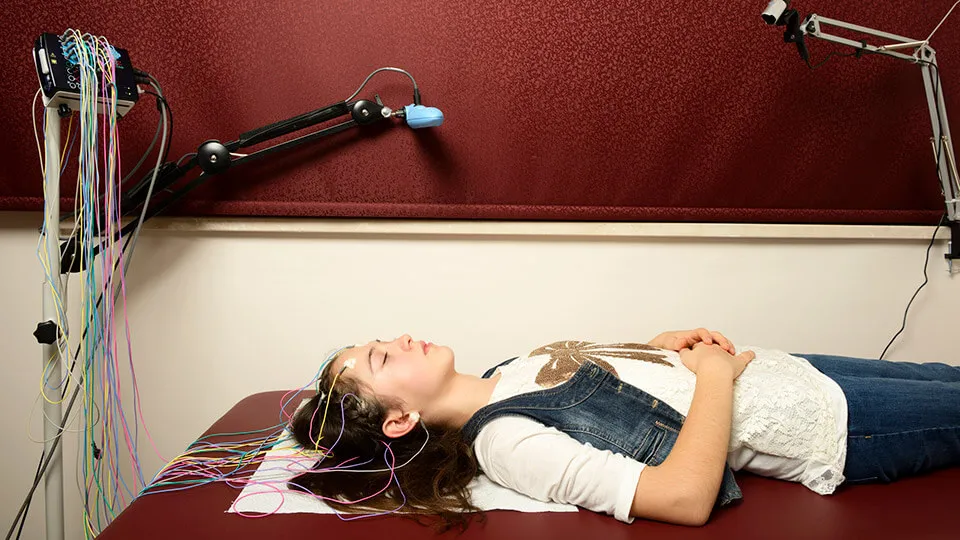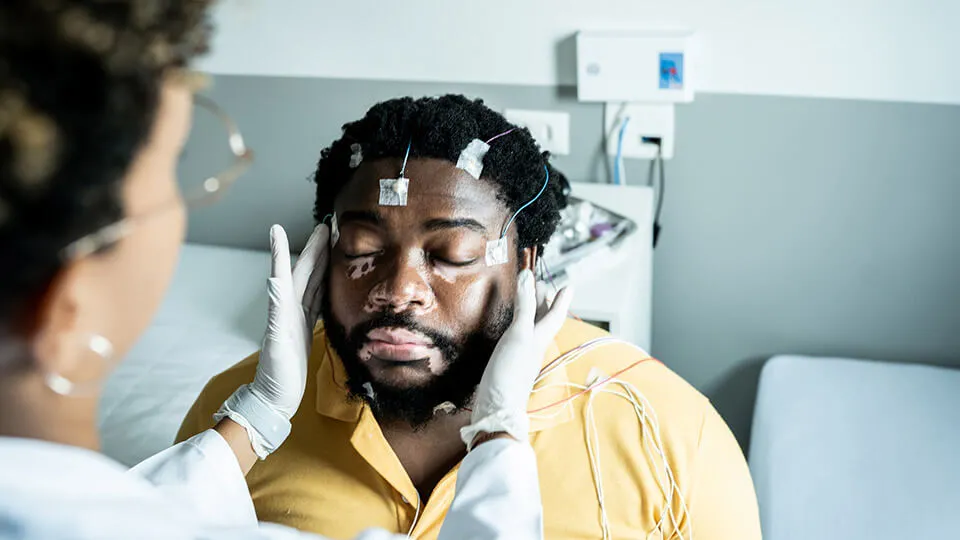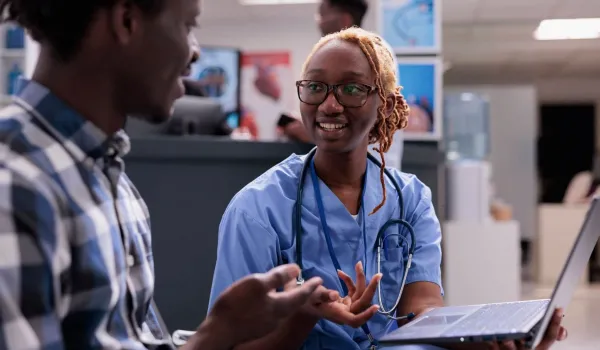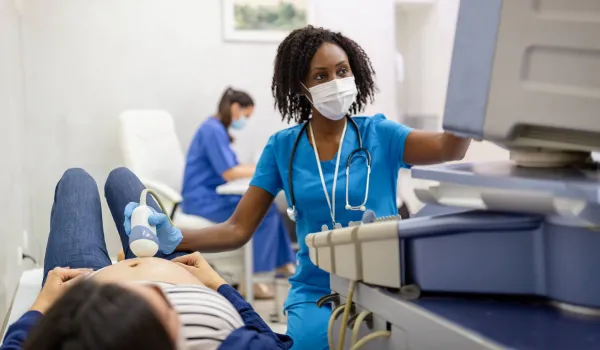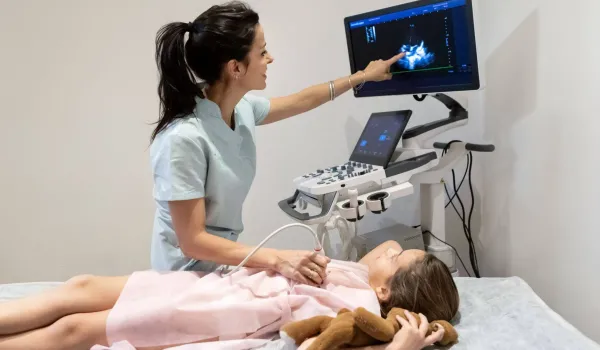Concorde Staff
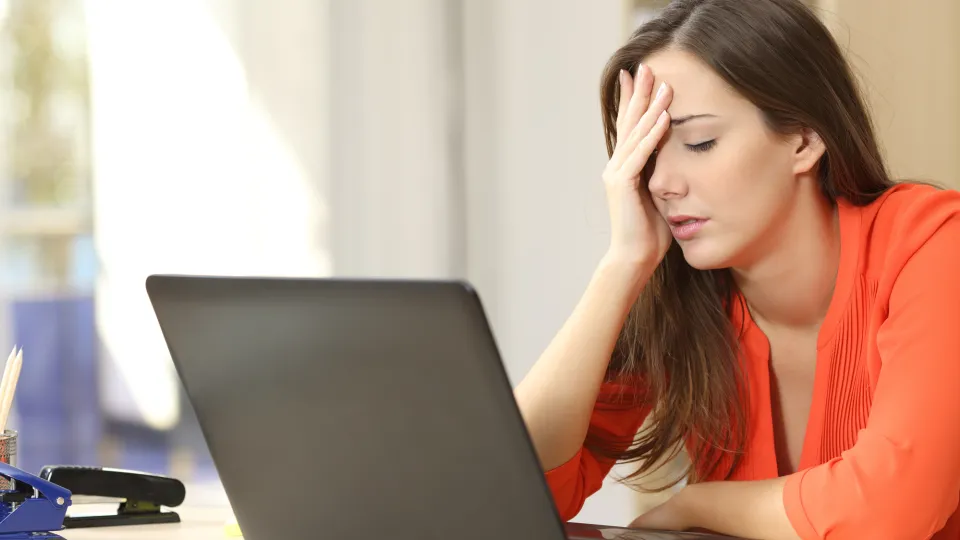
Sleep-disordered Breathing (SDB), which includes obstructive sleep apnea (OSA) as the most common variant, is characterized by intermittent episodes of partial or complete obstruction of the upper airway, leading to the cessation of breathing while asleep. It is estimated that more than 22 million Americans suffer from SDB. Of those 22 million, it is estimated that 80 percent of those cases go undiagnosed.
That's where Polysomnographic Technology, which we teach at four of our Concorde campuses, comes into play. Polysomnographic Technology deals with the diagnostic and treatment of sleep disorders such as SDB and OSA and helps ease the suffering and improve the lives of patients. Concorde's Polysomnographic Technology programs prepare students through hands-on, clinical learning experiences that are directly applicable to a work setting.
Diagnosing OSA using Polysomnographic Technology
According to Chris Lockhart, Polysomnography Program Director at Concordes campus in Memphis, Tenn., common signs and symptoms of OSA are excessive daytime sleepiness, loud snoring, observed episodes of cessation in breathing and abrupt awakenings. Also, gasping or choking during sleep, waking with a dry mouth or sore throat, morning headaches, difficulty concentrating during the day, mood changes such as depression or irritability, hypertension, nighttime sweating and decreased libido.
Taking a test to determine whether you need Polysomnographic Technology
Lockhart said one of the easiest ways to determine whether you should see a sleep specialist is by taking the Epworth Sleepiness Scale examination. Answer the following questions on this scale:
- 0 = would never doze
- 1 = slight chance of dozing
- 2 = moderate chance of dozing
- 3 = high chance of dozing
The following questions refer to the usual way of life in recent times. Try to answer honestly as to recent and past events, even if you haven't experienced some of the following recently.
- Sitting and reading
- Watching television
- Sitting, inactive in a public place (such as a movie theater or a meeting
- As a passenger in a car for an hour without a break
- Lying down to rest in the afternoon when circumstances permit
- Sitting and talking to someone
- Sitting quietly after lunch without alcohol
- In a car, while stopped for a few minutes in traffic
Lockhart said to add your total score. It is highly recommended that you see a sleep therapist if your score is nine or higher. They will further evaluate you to see if you need a sleep study.
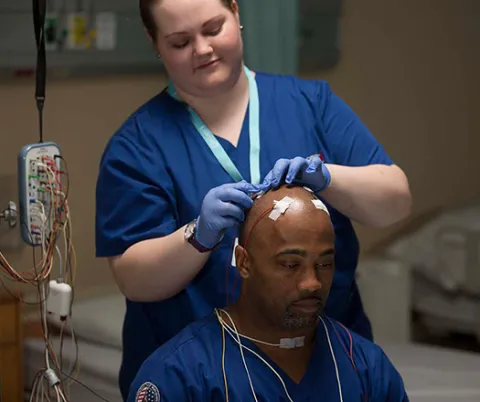
Take The Next Step Towards a Brighter Future
Interested in learning more about our Polysomnographic Technology program? We have a Concorde representative ready to talk about what matters most to you. Get answers about start dates, curriculum, financial aid, scholarships and more!
